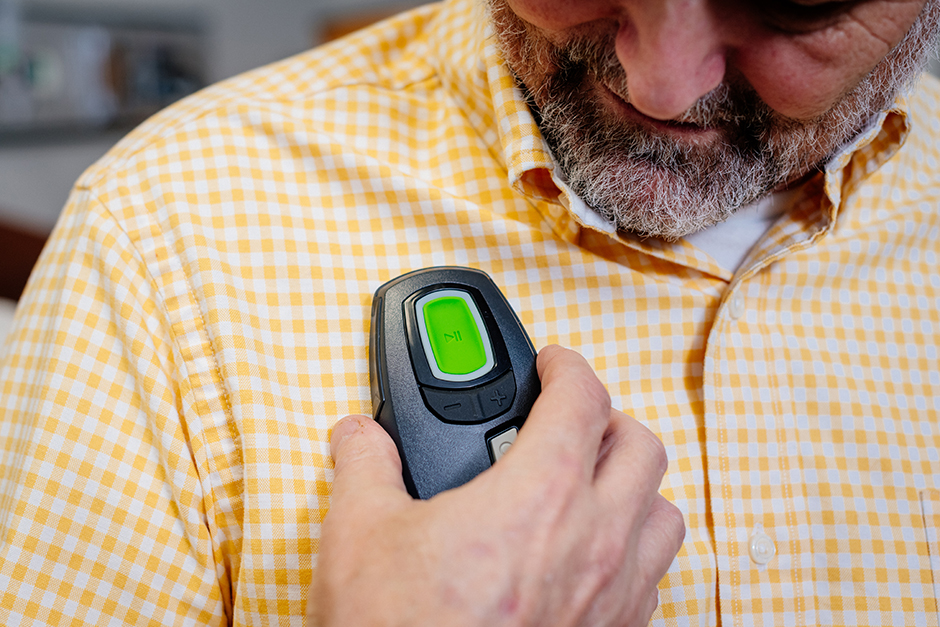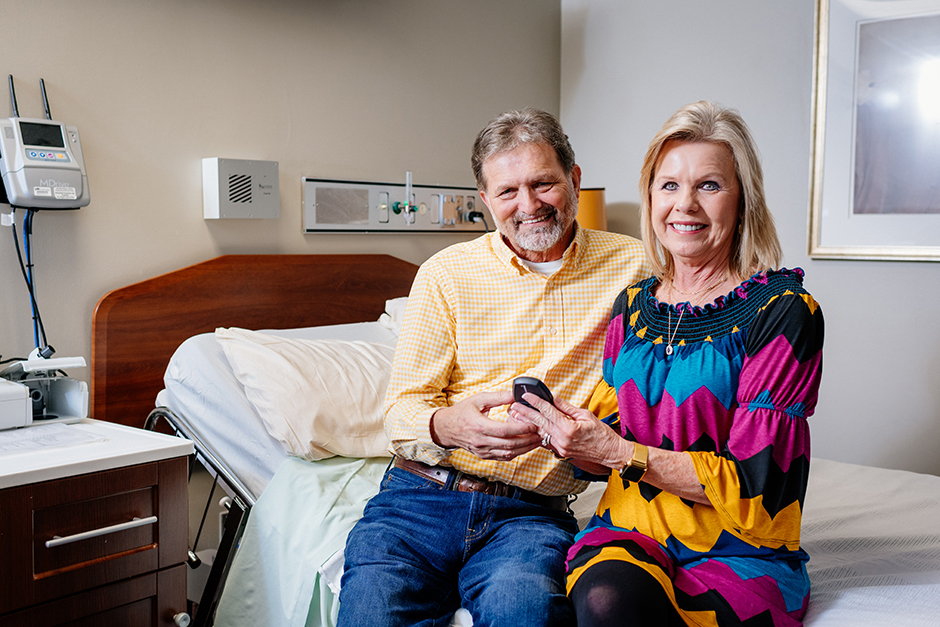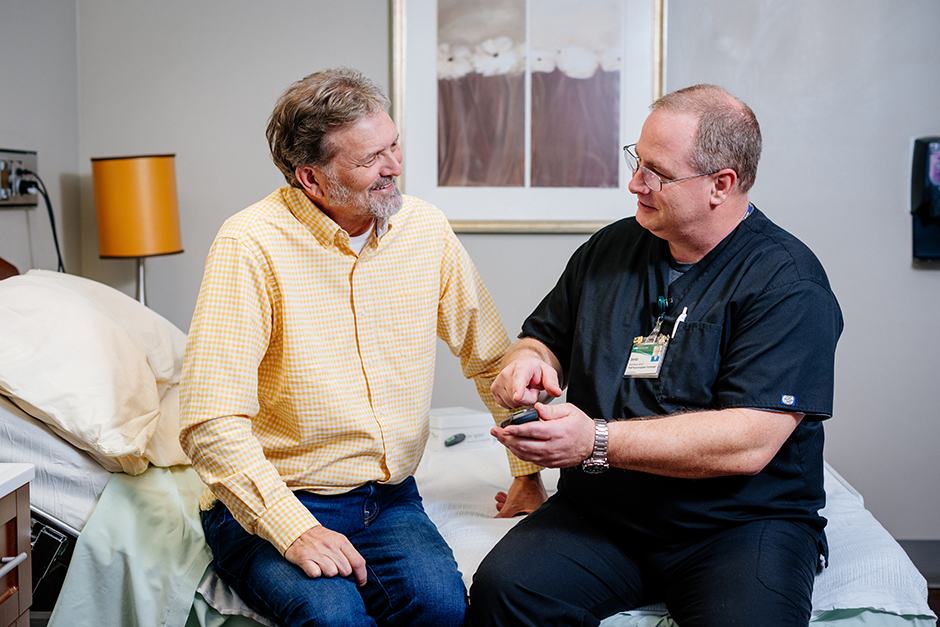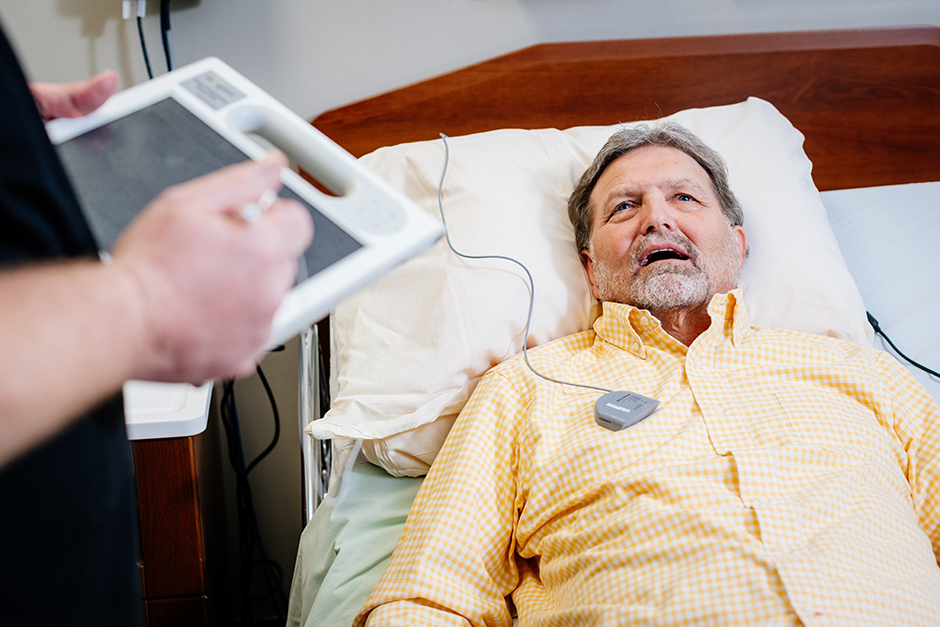Media contact: Adam Pope
Patrick and Myra Perault have struggled with sleep apnea for years.
“My husband would tell me I would stop breathing for a long time in my sleep at night and I snored really badly,” Myra said. “I had to start driving him around because he was falling asleep at the wheel.”
The Peraults were both suffering from the side effects of obstructive sleep apnea, where the airway becomes blocked during sleep by the tongue and other soft tissues in the mouth and airway, leading to shallow breathing or pauses between breaths.
Loud snoring, restless sleep, headaches, and lack of energy during the day are common symptoms of sleep apnea. Since it interferes with a good night’s sleep, it can also increase the risk for workplace or traffic accidents caused by drowsiness.
After the couple’s diagnoses, they were prescribed Continuous Positive Airway Pressure or CPAP — a common treatment for obstructive sleep apnea. CPAP machines use a hose and mask or nosepiece to deliver constant and steady air pressure.
“I used it for years until I developed throat cancer,” said Patrick. “The radiation dried out my throat and I couldn’t get enough moisture when I used the CPAP.”
Myra, like many patients, couldn’t handle the discomfort of the CPAP mask and hose while trying to sleep.
“I just could not tolerate it,” she said. “I started researching what you can do other than use a CPAP for sleep apnea.”
That’s when she found Kirk Withrow, M.D., an ENT surgeon in the Department of Otolaryngology at the University of Alabama at Birmingham, and the first surgeon in Alabama to implant the Inspire device — an implantable stimulator for sleep apnea.
Inspire consists of a breathing sensor, a stimulation lead and a small remote. Inspire therapy continuously monitors a patient’s breathing while asleep.
“The stimulation from the device moves the tongue slightly forward and out of the airway, allowing for more normal airflow,” Withrow said. “For the appropriate patient, this therapy is an excellent alternative to other surgical options for treating obstructive sleep apnea.”
The UAB Sleep/Wake Disorders Center performed sleep studies on both Myra and Patrick and determined they were candidates for the procedure.
The couple decided since Myra was in better health she would have the procedure done first.
“I was going to let her be the guinea pig,” Patrick laughed.
The device was implanted in her chest, with a stimulation lead run underneath her skin to a position near her hypoglossal nerve, the nerve that controls the movement of the tongue.
After the two-hour procedure, Myra went home that same day. About a month later, the device was turned on during a clinic visit. She is now able to use the small remote control to turn the device on at bedtime and off when she wakes up the next morning.
“After three months of using Inspire, I went back for an overnight sleep study,” she said. “They said I didn’t have any sleep apnea events and that it was one of the best studies they have seen.”
Myra’s experience gave her husband, Patrick, the confidence to also have the device implanted.
“I don’t even feel like it’s there,” he said. “I look forward to having something that works for me.”
Myra says she now has energy when she wakes up and feels like a different person.
“It was the best thing I have ever done,” she said. “I pray it does for Pat what it has done for me. I’m so very thankful for Dr. Withrow.”
To learn more about sleep disorders and the best treatment option for you, visit the UAB Sleep/Wake Disorders Center website or call 205-934-7719.



